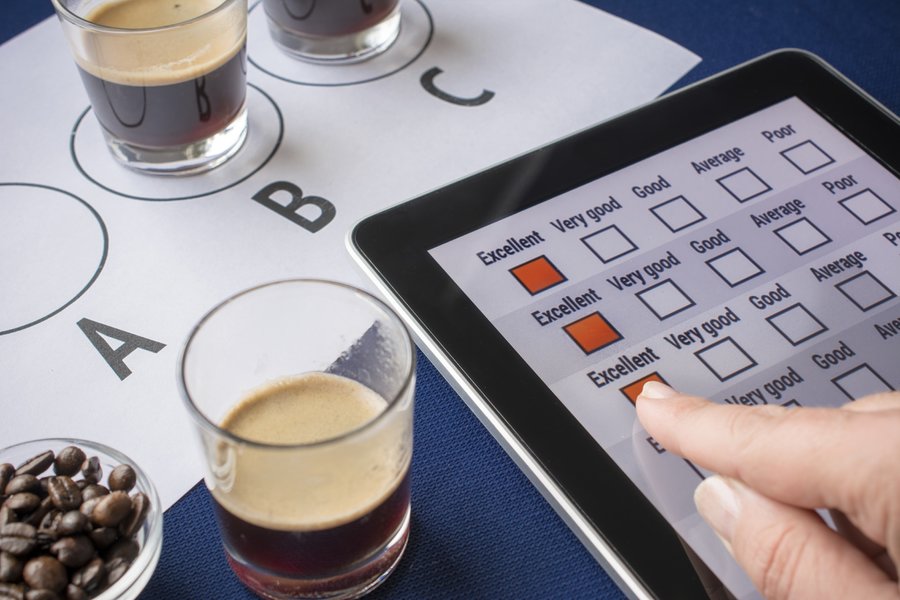ISO 40545 Sensory Texture Evaluation in Meat Products
The ISO 40545 standard provides a robust framework for evaluating the texture of meat products through sensory analysis. This evaluation is critical for quality assurance, ensuring that processed meats meet consumer expectations and regulatory requirements.
Texture plays a pivotal role in determining the overall acceptability of meat products, influencing both market performance and customer satisfaction. The sensory texture assessment involves a panel of trained evaluators who systematically sample and assess various attributes like hardness, springiness, gumminess, and chewiness using descriptive language and numerical scales.
According to ISO 40545, the evaluation process begins with specimen preparation. This includes slicing or cutting meat samples into standard sizes and shapes that allow for consistent texture assessment. The specimens must be prepared in a manner that preserves their natural characteristics as much as possible. Proper storage conditions are also crucial; temperature and humidity levels should minimize changes to texture.
The sensory evaluation itself is conducted under controlled environmental conditions, which may include specific light levels, seating arrangements, and ambient noise control. Evaluators undergo rigorous training to ensure they can consistently identify and describe texture attributes accurately. The evaluators use a standardized lexicon provided in ISO 40545 to rate the samples.
Instrumentation used for this evaluation can range from simple handheld tools like spring scales to more sophisticated devices designed specifically for measuring textural properties. These instruments help quantify certain aspects of texture, such as shear force or bite pressure, which are then compared against established benchmarks.
The results from ISO 40545 evaluations are essential inputs into product development cycles and quality control programs. They allow manufacturers to identify areas where improvements can be made to enhance consumer satisfaction without compromising safety or compliance with relevant standards like EU regulations for meat products.
In summary, the application of ISO 40545 ensures that sensory texture evaluation practices remain consistent across different laboratories and facilities worldwide. By adhering to this international standard, food companies demonstrate their commitment to delivering high-quality products that meet both regulatory expectations and customer preferences.
Applied Standards
The ISO 40545 standard integrates seamlessly with other relevant international standards such as ISO 16865 for sensory analysis in general, which provides broader guidelines on how to conduct sensory evaluations. Additionally, it aligns well with EU regulations governing meat products, ensuring that any evaluation conducted meets all necessary requirements.
For instance, when evaluating texture in processed meats like sausages or frankfurters, the ISO 40545 methodology helps ensure uniformity among various producers within Europe and beyond. This consistency is vital for maintaining consumer confidence while complying with local laws regarding food safety and quality.
Why Choose This Test
Selecting ISO 40545 for sensory texture evaluation offers numerous advantages, particularly for organizations involved in the production or testing of meat products. Firstly, it provides a universally accepted method that enhances credibility and comparability between different laboratories.
- Consistency: Ensures consistent results across multiple locations and times, reducing variability due to human factors.
- Audibility: Allows for clear documentation of findings, supporting internal audits and external inspections.
- Adaptability: Can be adapted to suit specific product types or market needs by adjusting the evaluation criteria accordingly.
Furthermore, adhering to ISO 40545 demonstrates a company’s dedication to maintaining high standards of quality control. It reassures stakeholders about the reliability and integrity of the products being produced. For R&D teams, this standard offers valuable insights into consumer preferences and trends, enabling them to innovate effectively within regulatory constraints.
Use Cases and Application Examples
| Product Type | Evaluation Criteria | Description of Process |
|---|---|---|
| Sausage | Hardness, springiness, gumminess | The sausage is cut into standard pieces. A trained evaluator applies pressure uniformly and records the hardness level using a spring scale. |
| Frankfurter | Cohesiveness, chewiness | Sampled frankfurters are placed in a controlled environment for 24 hours before evaluation. An evaluator chews each sample and rates its chewiness based on the number of chews required. |
| Pâté | Firmness, spreadability | The pâté is evaluated immediately after preparation. A spatula is used to assess how easily it spreads across a surface without breaking apart. |
- Sausage: Hardness can indicate whether the casing holds together properly during cooking. Springiness shows resilience, while gumminess suggests overprocessing.
- Frankfurter: Cohesiveness ensures integrity throughout slicing and serving, whereas chewiness reflects customer preference for the right balance of tenderness versus firmness.
- Pâté: Firmness affects sliceability, and spreadability impacts presentation quality at the table.





